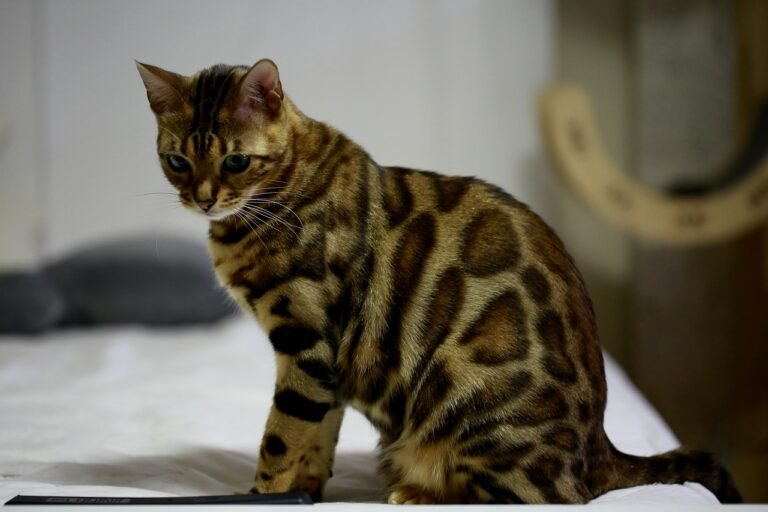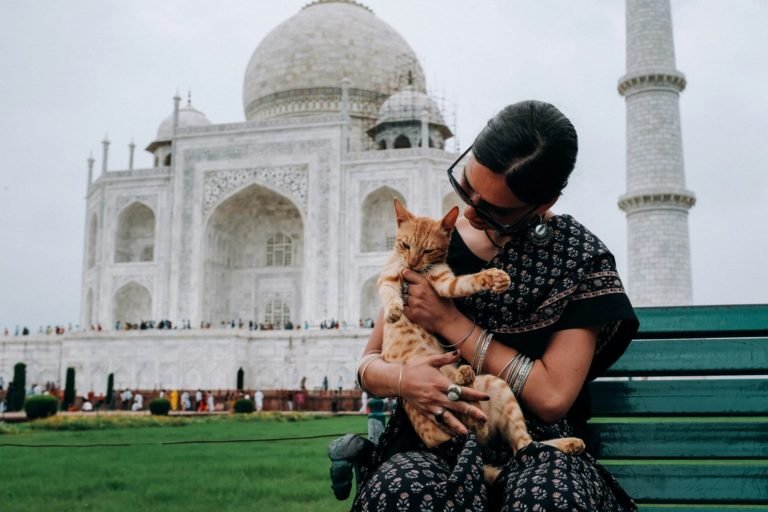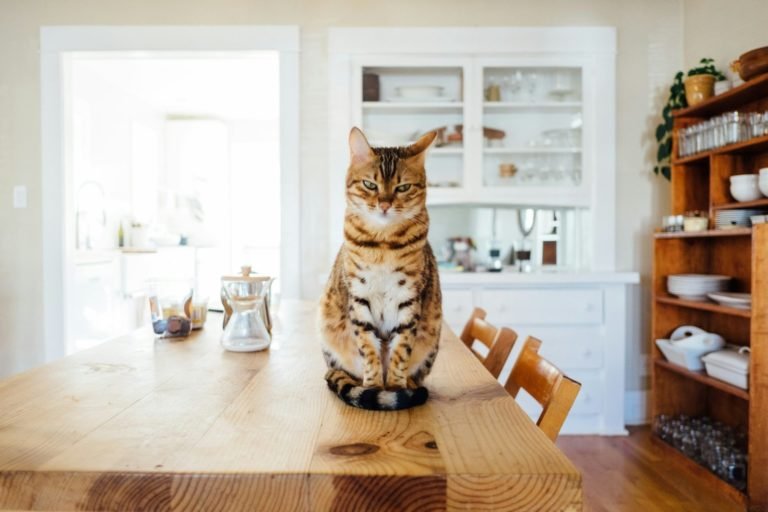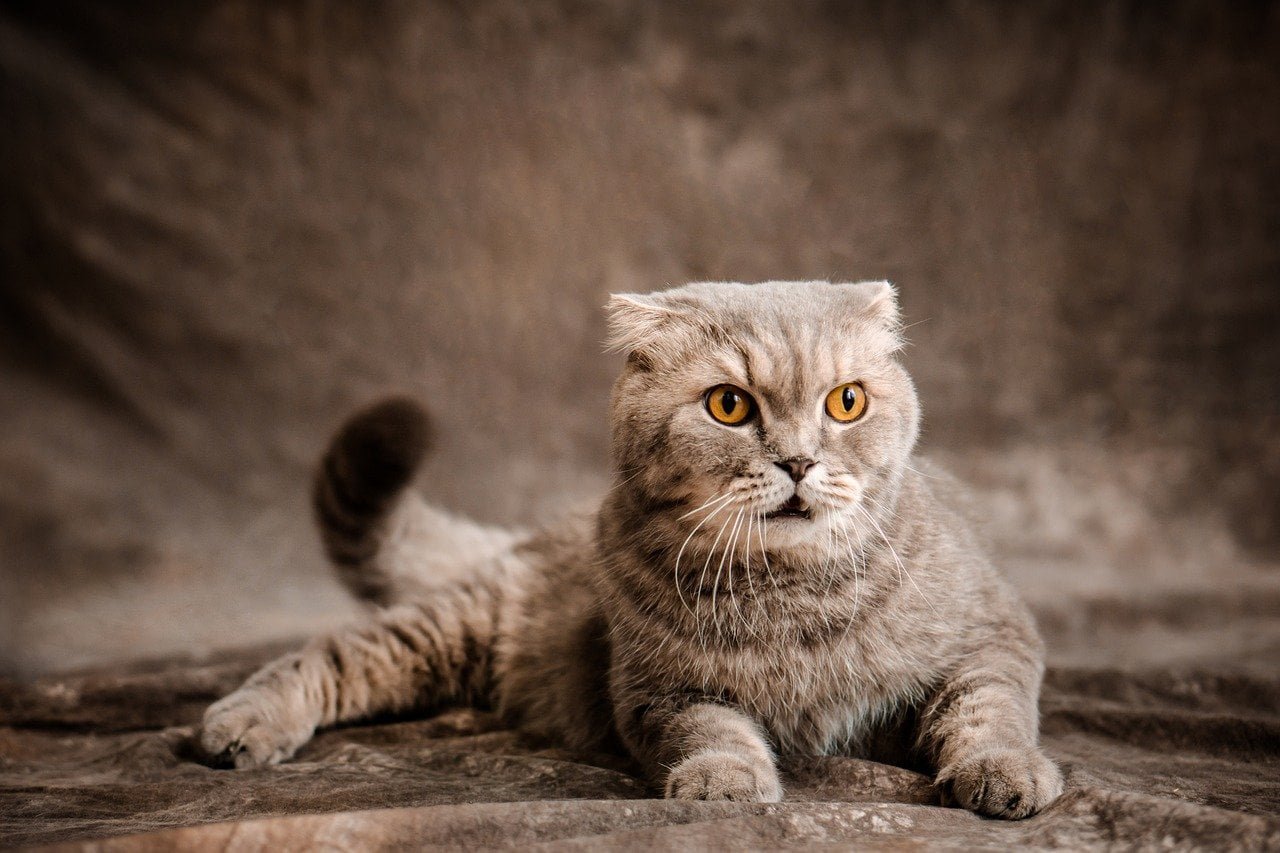
Hey there, cat lovers! Are you ready to dive into the wonderful world of exotic cat breeds?
If you’ve ever seen a cat that made you do a double-take, chances are it was one of these unique felines. Exotic cat breeds are the show-stoppers of the cat world, turning heads with their unusual looks and personalities.
But what exactly are exotic cat breeds?
Well, these are the cats that stand out from your everyday house cats. They’re the felines that make people ask, “What kind of cat is that?” Exotic cat breeds often have features that seem almost wild – think spotted coats, extra-large sizes, or even no fur at all!
In this blog post, we’re going to explore a whole range of exotic cat breeds. We’ll learn about their origins, their special features, and what it’s like to have them as pets. Whether you’re thinking about getting an exotic cat breed or just love learning about unusual animals, you’re in for a treat!
So, are you ready to meet some of the most interesting cats in the world? Let’s embark on this exciting journey through the world of exotic cat breeds. From the wild-looking to the just plain wild, these fascinating felines are sure to capture your heart and imagination. Let’s get started!
What Are Exotic Cat Breeds?
First things first – what exactly do we mean by “exotic cat breeds”?
Well, these are types of cats that aren’t as common as your typical tabby or Siamese. They often have unique features that make them stand out. Some exotic cat breeds were created by mixing wild cats with domestic cats, while others developed naturally in different parts of the world.
It’s important to remember that while these cats may look wild, they’re still house cats at heart. They need love, care, and attention just like any other pet. Now, let’s meet some of these cool cats!
Top 11 Exotic Cat Breeds
The term “exotic cat breeds” covers a wide variety of unique cats. Some exotic cat breeds were created by mixing wild cats with domestic cats, resulting in kitties that look like they belong in the jungle but act like loving pets. Others developed naturally in different parts of the world, adapting to their environments in ways that made them look different from other cats.
Exotic cat breeds can include:
- Cats with wild-looking spots or stripes
- Cats with unusual ear shapes
- Extra large or extra small cats
- Cats with curly fur or no fur at all
- Cats with unique eye colors
These exotic cat breeds aren’t just different in looks – many of them have fascinating histories and personalities, too. Some are as old as ancient civilizations, while others were only developed in the last few decades. Some exotic cat breeds are super energetic and need lots of playtime, while others are calm and cuddly.
1. The Bengal: A Wild-Looking House Cat
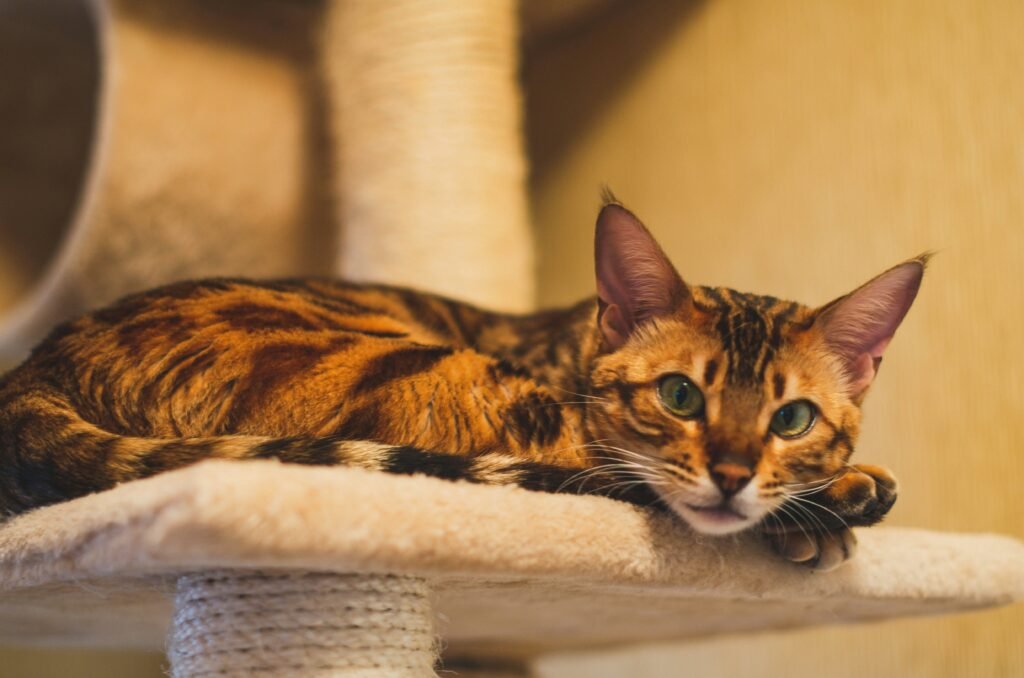
Let’s start with one of the most popular exotic cat breeds – the Bengal. These cats look like they just stepped out of the jungle, but they’re actually super friendly house pets. Bengals have beautiful spotted coats that make them look like little leopards.
Where did the Bengals come from? Well, back in the 1960s, a cat breeder named Jean Mill decided to mix a regular house cat with a wild Asian Leopard Cat. The result was the Bengal we know today. These cats are:
- Energetic: They love to play and climb
- Smart: You can teach them tricks, and they love puzzle toys
- Talkative: They’ll chat with you all day long
- Affectionate: They love their humans and enjoy cuddles
Bengals come in different colors, but they always have spots or marbled patterns. Some even have a special shimmery coat that looks like it’s sparkling in the sunlight!
2. The Sphynx: The Naked Cat
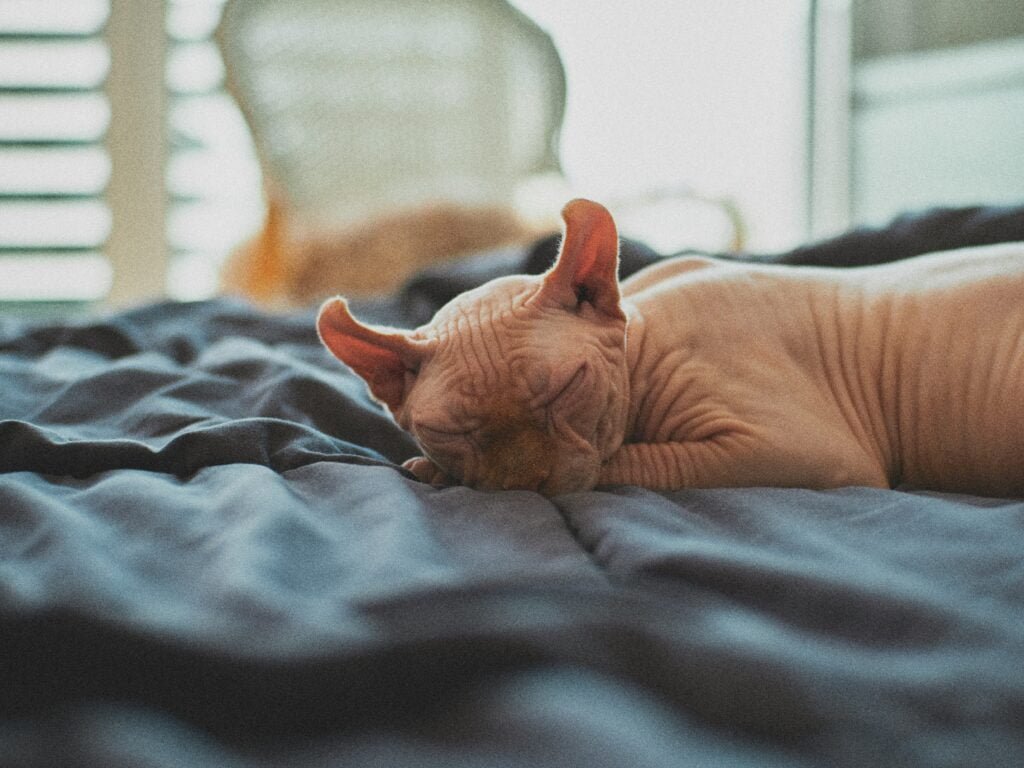
Now, let’s meet a cat that’s about as different from a Bengal as you can get – the Sphynx. These cats are famous for not having any fur! That’s right, they’re completely naked (well, almost – they actually have a very fine, peach-fuzz type of hair).
Sphynx cats first appeared in Canada in the 1960s when a hairless kitten was born to a regular cat. People thought this look was interesting, so they started breeding more hairless cats. Here’s what you should know about Sphynx cats:
- They’re not actually hairless: They have very short, fine hair that feels like suede
- They’re warm to the touch: Without fur, you can feel their body heat directly
- They need special care: Their skin can get oily and needs regular cleaning
- They’re super friendly: Sphynx cats love attention and are very affectionate
Even though they look a bit strange, Sphynx cats are total cuddle bugs. They love to snuggle up with their humans to stay warm.
3. The Maine Coon: The Gentle Giant
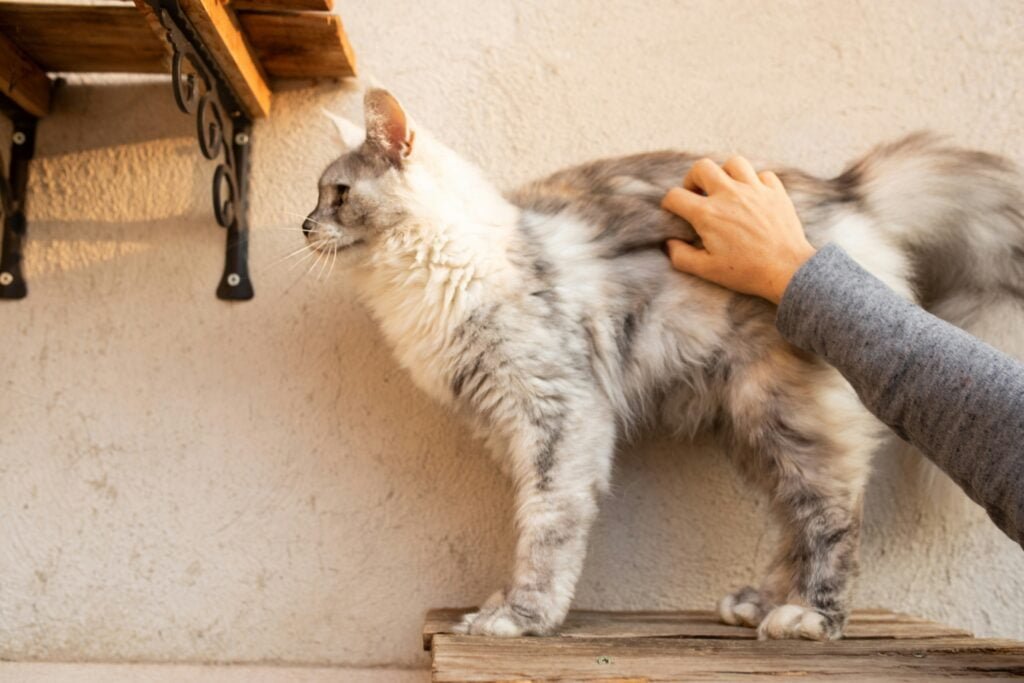
Moving on to a cat that’s the opposite of small and hairless, let’s talk about the Maine Coon. These cats are huge! They’re one of the biggest domestic cat breeds in the world. Some Maine Coons can weigh up to 18 pounds and measure up to 40 inches long from nose to tail tip!
Maine Coons come from the state of Maine in the United States. There are lots of fun stories about how they came to be, but no one knows for sure. Here’s what makes Maine Coons special:
- They’re big and fluffy: With long, thick fur and large bodies
- They have tufted ears: Little tufts of fur stick up from their ear tips
- They’re great in cold weather: Their thick coats keep them warm
- They’re gentle giants: Despite their size, they’re very sweet and friendly
Maine Coons are sometimes called “dog-like” cats because they’re so friendly and can even learn to play fetch!
4. The Scottish Fold: The Owl-Like Cat

Have you ever seen a cat that looks a bit like an owl? That’s probably a Scottish Fold! These cats are known for their unique ears that fold forward and down, giving them a round, owl-like face.
Scottish Folds first appeared in Scotland in the 1960s when a farmer found a cat with folded ears. Here’s what you should know about Scottish Folds:
- Not all have folded ears: Some Scottish Folds have normal, pointy ears
- They’re medium-sized: Not too big, not too small
- They’re laid-back: Scottish Folds are usually calm and easy-going
- They come in many colors: You can find Scottish Folds in almost any color or pattern
Scottish Folds are great family cats because they’re so relaxed and friendly. They love to be around people but aren’t too demanding.
5. The Savannah: The Tall and Spotty Cat
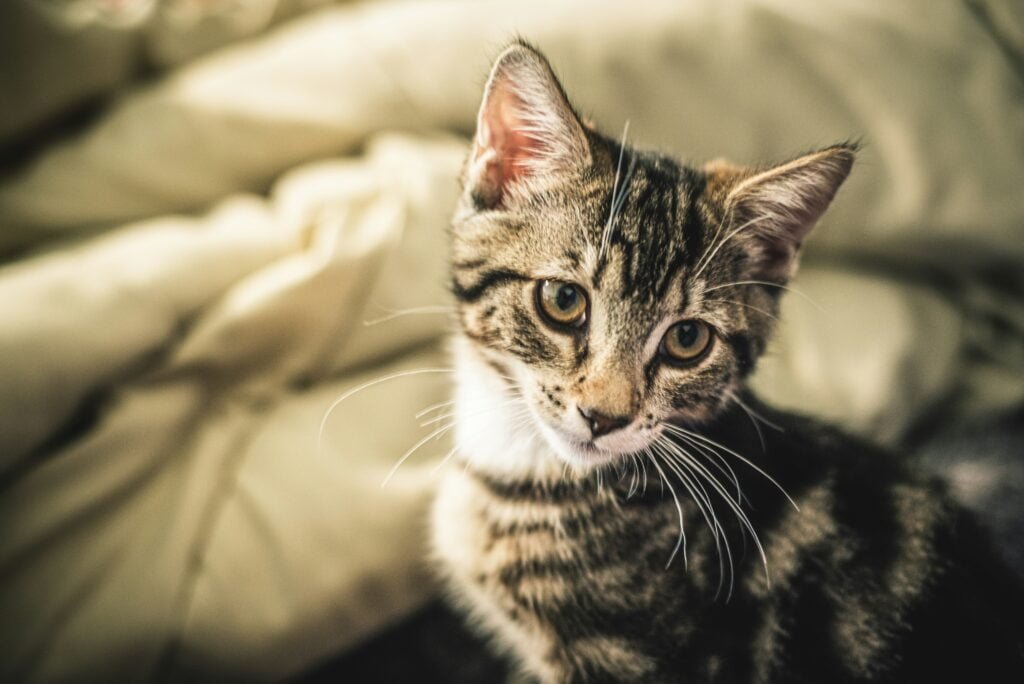
If you think the Maine Coon is impressive, wait until you meet the Savannah! These cats are a mix of domestic cats and wild African Servals. They’re known for being very tall and having long legs, which makes them look even bigger than they are.
Savannahs were first bred in the 1980s and have become popular exotic pets. Here’s what makes Savannahs unique:
- They’re huge: Some can be as tall as medium-sized dogs when standing on their hind legs
- They have spotted coats: Like Bengals, they have wild-looking spots
- They’re very active: Savannahs need lots of play and exercise
- They’re smart: You can train them to do tricks and even walk on a leash
It’s important to know that Savannahs can be a handful. They need lots of attention and space to run around. In some places, it’s not legal to own Savannahs, especially the first few generations after the wild Serval.
6. The Munchkin: The Short-Legged Cat

Now, let’s go from the tallest cat to the shortest! Munchkin cats are known for their super short legs. They look a bit like the cat version of a Dachshund (you know, those “wiener dogs”).
Munchkins first appeared naturally in the 1980s, and people started breeding them on purpose in the 1990s. Here’s what you should know about Munchkins:
- They have very short legs: But their bodies are normal-size
- They can still jump: Just not as high as other cats
- They’re playful: Munchkins love to run around and play
- They come in all colors and patterns: You can find Munchkins that look like any other cat breed, just with shorter legs
Some people worry that Munchkins might have health problems because of their short legs, but so far, they seem to be just as healthy as other cats.
7. The Lykoi: The Werewolf Cat
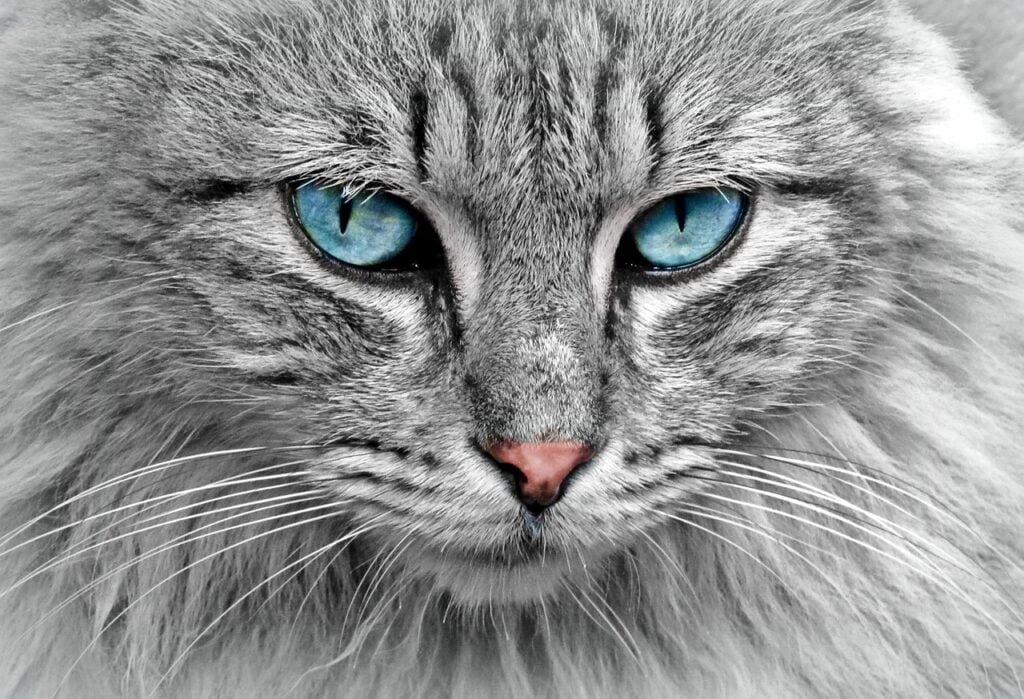
Ready for something really weird? Meet the Lykoi, also known as the Werewolf Cat! These cats look like they’re halfway between a regular cat and a Hollywood werewolf. They have patchy fur that makes them look a bit scruffy and wild.
Lykoi cats are a very new breed. They first appeared in 2011 when some kittens were born with this strange, patchy fur. Here’s what makes Lykoi cats special:
- They have patchy fur: Parts of their body are bald, especially around the face
- Their fur can change: Sometimes, they lose all their fur and then grow it back
- They look wild: But they’re actually very friendly
- They’re rare: There aren’t many Lykoi cats in the world yet
Despite their spooky looks, Lykoi cats are sweet and playful. They love their humans just like any other cat.
8. The Peterbald: The Bat-Eared Cat
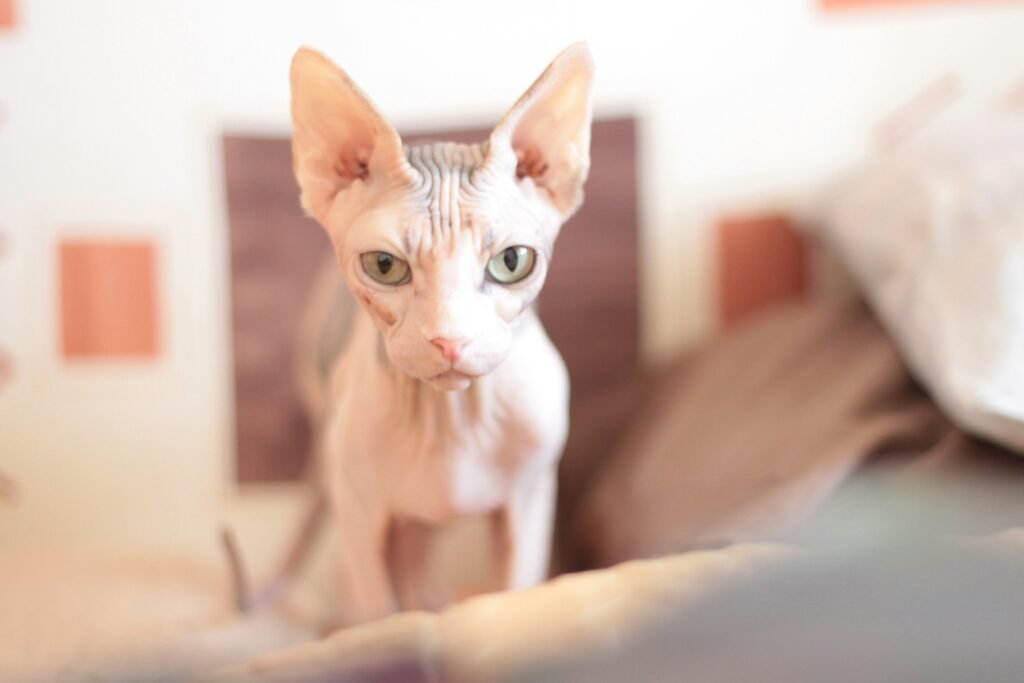
If you thought the Sphynx was the only hairless cat, meet the Peterbald! These cats come from Russia and can be completely hairless or have very short, fine hair. What makes them really stand out is their big, pointy ears that look a bit like bat ears.
Peterbalds were first bred in 1994 in St. Petersburg, Russia. Here’s what you should know about them:
- They can be bald or have short hair: Some even have wavy or brushed-back-looking hair
- They have big ears: Which make their heads look triangular
- They’re smart and active: Peterbalds love to play and explore
- They’re very loving: These cats form strong bonds with their humans
Like Sphynx cats, Peterbalds need special care for their skin. They can get cold easily, so they often like to wear little cat sweaters!
9. The Toyger: The Mini Tiger
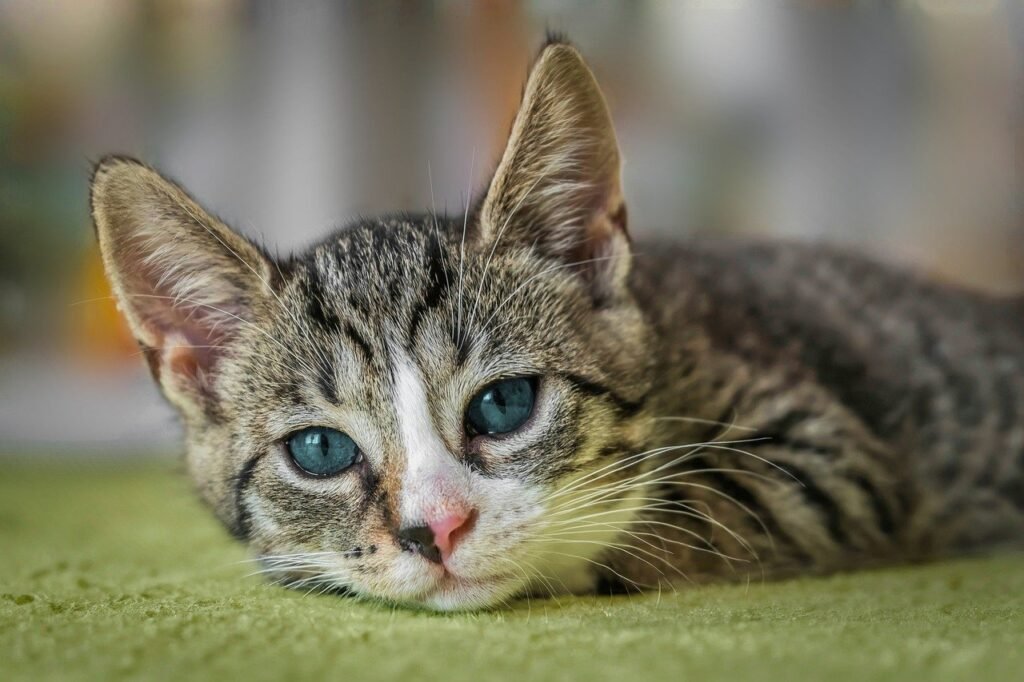
Have you ever wished you could have a pet tiger? Well, the Toyger is probably the closest you can get! These cats were bred to look like tiny tigers, complete with orange fur and black stripes.
Toygers are a pretty new breed, first developed in the 1980s. Here’s what makes Toygers special:
- They look like tigers: With orange fur and black stripes
- They’re medium-sized: Not as big as real tigers, of course!
- They’re friendly: Toygers are known for being good with people and other pets
- They’re athletic: They love to play and climb
Despite their wild looks, Toygers are 100% domestic cats. They don’t have any recent wild ancestors like Bengals or Savannahs do.
10. The Khao Manee: The Diamond-Eyed Cat
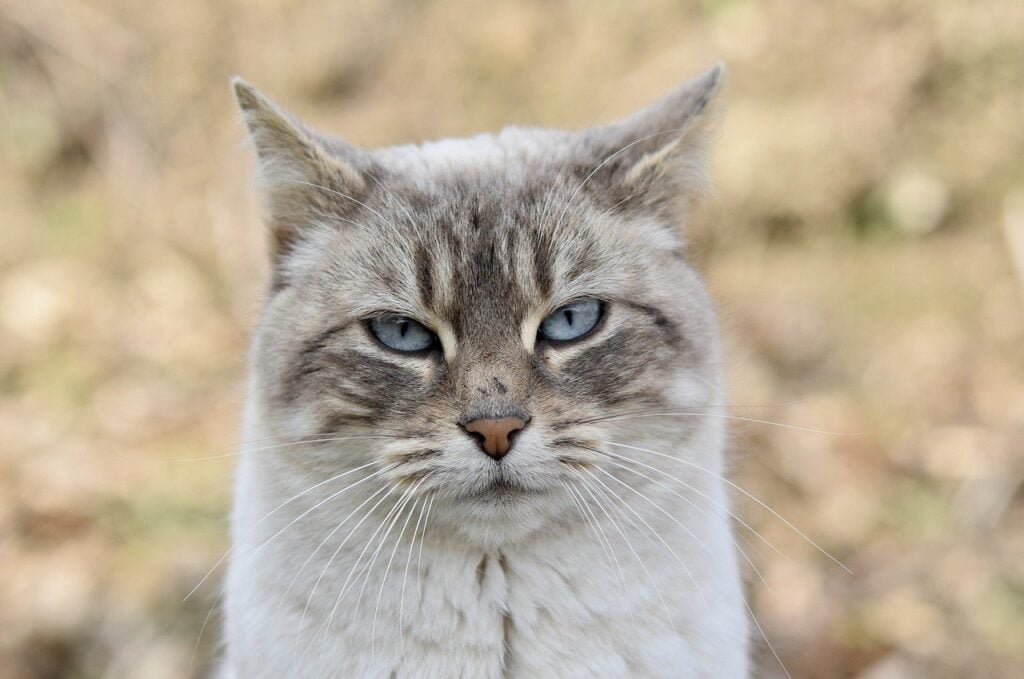
Let’s travel to Thailand to meet the Khao Manee, also known as the Diamond Eye Cat. These cats are pure white with striking eyes that can be blue, gold, or even one of each color!
Khao Manee cats have been around in Thailand for hundreds of years, but they’re pretty new to the rest of the world. Here’s what you should know about them:
- They’re all white: With no markings at all
- They often have odd eyes: One blue and one gold
- They’re playful and smart: Khao Manees love to learn tricks
- They’re rare: There aren’t many of these cats outside of Thailand
In Thai, “Khao Manee” means “white gem,” which is a perfect name for these beautiful cats.
11. The Chausie: The Mini Jungle Cat
Last but not least, let’s meet the Chausie. These cats are a mix between domestic cats and the Jungle Cat, a wild cat from Asia. They’re big, athletic, and look a bit wild.
Chausies were first bred in the 1960s and 1970s. Here’s what makes them unique:
- They’re big: Almost as big as Maine Coons
- They’re athletic: Chausies love to run, jump, and climb
- They often have ticked coats: Their fur looks a bit like a cougar’s
- They’re smart: Chausies need lots of toys and games to keep them busy
Chausies are not for everyone. They need lots of space and attention, and in some places, it’s not legal to own them.
Caring for Exotic Cat Breeds: What You Need to Know
If you’re captivated by the unique charm of exotic cat breeds, it’s important to understand that these special felines often come with special needs. Let’s dive deeper into what it really means to care for an exotic cat breed.
The Cost Factor: Exotic Cat Breeds More Than Just the Initial Price Tag
When we say exotic cat breeds can be expensive, we’re not just talking about the purchase price. While it’s true that some exotic breeds can cost thousands of dollars to buy, the expenses don’t stop there:
- Ongoing veterinary care: Exotic breeds may need more frequent check-ups or specialized care.
- Special diets: Some breeds require high-protein diets or prescription food.
- Grooming costs: Breeds with long or unusual coats might need professional grooming.
- Insurance: Pet insurance for exotic breeds is often more expensive.
- Enrichment items: Many exotic breeds need lots of toys and climbing structures to stay happy.
Before bringing home an exotic cat, make sure you’re prepared for these long-term financial commitments.
Special Care Requirements of Exotic Cat Breeds: Beyond Basic Cat Care
Different exotic breeds have different needs. Here are some examples:
- Hairless cats like Sphynx need regular baths to manage skin oils.
- Bengal cats often need more mental stimulation and may require puzzle toys or even leash training.
- Maine Coons, due to their size, might need larger litter boxes and sturdier cat trees.
- Savannah cats often have high energy levels and may need a cat wheel or extensive play areas.
Research the specific needs of the breed you’re interested in. Be prepared to adapt your home and routine to meet these needs.
Legal Considerations for Exotic Cat Breeds: Not Just a Technicality
The legality of owning certain exotic cat breeds isn’t just about following rules – it’s about the safety and well-being of both you and the cat. Some things to consider:
- Some states or countries have outright bans on certain hybrid breeds like Savannahs or Bengals.
- There might be restrictions on which generations of hybrid cats are legal to own.
- Some areas require special permits or licenses for exotic pets.
- Housing regulations (like apartments or HOAs) might have their own rules about exotic pets.
Always check both local and state/country laws before committing to an exotic breed. Remember, laws can change, so stay informed even after you get your cat.
They’re Still Cats: The Importance of Basic Feline Care for Exotic Cat Breeds
While exotic breeds might look wild, they still need the basics that all cats require:
- Love and attention: Regular playtime and cuddles are essential.
- A balanced diet: Even if it’s a special diet, it needs to meet all their nutritional needs.
- Clean litter box: Scoop daily and do a deep clean regularly.
- Scratching posts: To maintain claw health and protect your furniture.
- Regular vet check-ups: For vaccinations, health screenings, and preventive care
Choosing a Responsible Breeder: A Crucial Decision
Getting your exotic cat from a responsible breeder is vital for several reasons:
- Health: Reputable breeders screen for genetic health issues.
- Temperament: Good breeders socialize their kittens properly.
- Support: They often provide ongoing advice and support.
- Ethics: Responsible breeders prioritize the cats’ welfare over profit.
Red flags to watch out for in breeders:
- Unwillingness to show you their breeding facilities
- Reluctance to provide health certificates
- Pressure to buy without asking questions
- Breeding cats that are too young or too frequently
Remember, buying from irresponsible breeders or dealers can support unethical practices and may result in a cat with health or behavioral issues.
Are Exotic Cat Breeds Right for You? A Deeper Dive
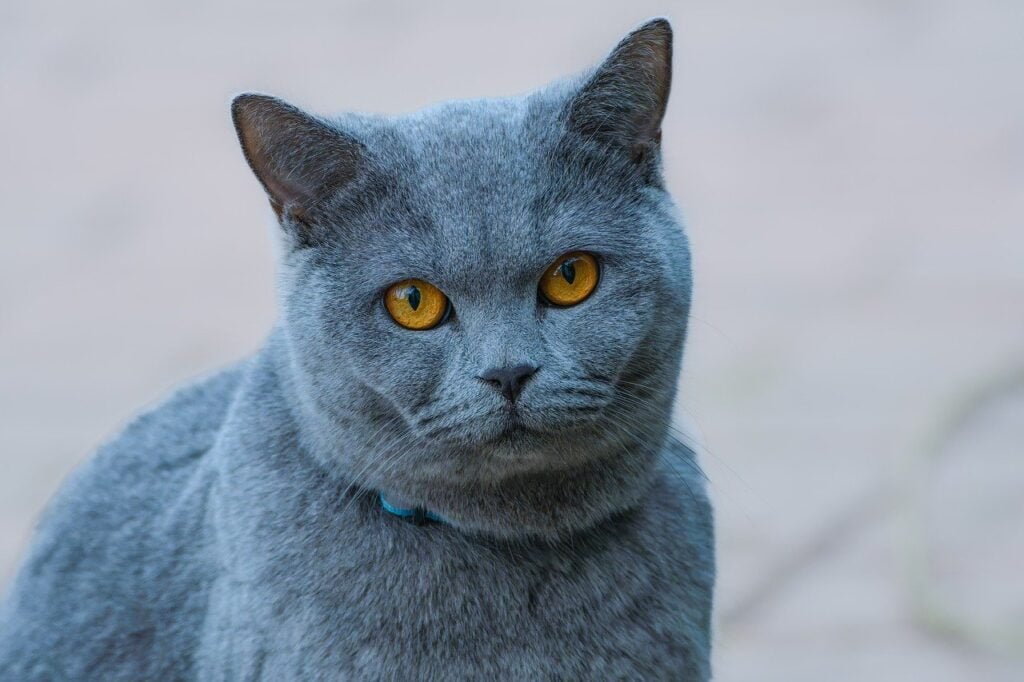
These unique felines can bring joy, excitement, and a special bond that’s truly one-of-a-kind. However, remember that owning an exotic cat is a significant responsibility. It requires dedication, resources, and a genuine commitment to providing the best possible life for your feline friend.
Before bringing an exotic cat into your life, it’s crucial to do some serious self-reflection. Let’s expand on those key questions:
Do I have enough time for a high-energy cat?
Many exotic breeds are more active and demanding than average cats. Consider:
- Can you play with your cat for at least an hour each day?
- Are you home enough to provide attention and care?
- Can you commit to training and socializing a potentially challenging pet?
Can I afford the special food or care some of these exotic cat breeds need?
Think beyond just the food:
- Can you afford potential medical emergencies?
- Is your budget flexible enough for unexpected pet expenses?
- Have you factored in costs like pet sitters familiar with exotic breeds?
Do I have enough space for a large or very active cat?
Space considerations include:
- Do you have room for large cat trees or play structures?
- Is your home cat-proofed for a potentially destructive pet?
- Do you have safe outdoor spaces like a catio for breeds that enjoy fresh air?
Are exotic cat breeds legal where I live?
Beyond just checking current laws:
- Are you willing to move if necessary to keep your pet?
- Can you commit to staying informed about changing regulations?
- Are you prepared to advocate for your right to own your exotic pet if needed?
Additional Questions to Consider:
How will the exotic cat breeds fit into my lifestyle long-term?
- Exotic cats can live 15-20 years. Are you ready for that commitment?
- How might your life change in that time (moves, relationships, children)?
How will this cat affect my other pets or family members?
- Are your existing pets suited to living with a potentially dominant exotic breed?
- Do you have young children who might not understand how to interact safely with a high-energy or large cat?
Am I prepared for potential behavioral challenges?
- Some exotic breeds can be more vocal, destructive, or demanding than regular house cats.
- Are you patient enough to work through potential issues?
Do I have a support system for the Exotic Cat Breeds?
- Is there a vet in your area experienced with exotic breeds?
- Do you have friends or family who can pet-sit if needed?
If, after careful consideration, you can confidently answer “yes” to these questions, an exotic cat breed might indeed be a wonderful addition to your life.
Wrapping Up Our Exotic Cat Adventure
Wow, we’ve met a lot of amazing cats today!
So, which of these exotic cat breeds was your favorite? Maybe you fell in love with the tiger-like Toyger, or perhaps the bat-eared Peterbald caught your eye. Or maybe you’re happy with your current kitty companion, exotic or not. No matter what, we can all agree that cats, in all their varieties, are pretty amazing animals.
Thanks for joining us on this journey through the world of exotic cat breeds. The next time you see an unusual-looking cat, you’ll know a little bit more about where it might have come from.
And who knows? Maybe one day, you’ll welcome an exotic cat into your own home. Until then, keep loving and appreciating all the wonderful cats in your life!


